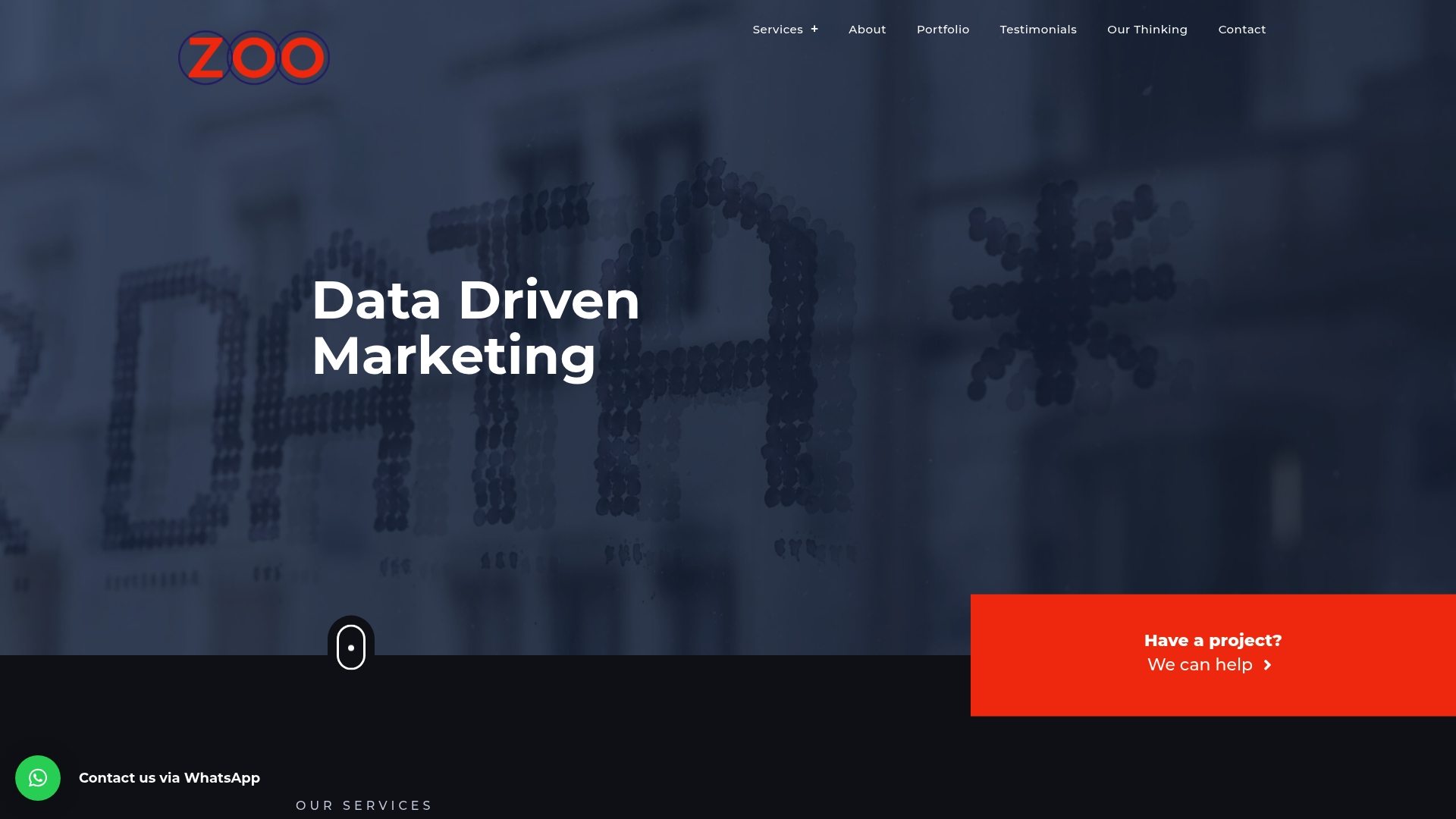Getting your business to stand out in a crowded market is no walk in the park. Loads of companies push out content every day, but only a select few really connect with their audience. Here is what surprises most people. Businesses that build detailed audience personas are 2.5 times more likely to beat their rivals at customer engagement. The real secret is not just making noise, but actually understanding what makes your customers tick.
Table of Contents
- Understand Your Audience’s Needs
- Utilize Interactive Content
- Foster A Community Atmosphere
- Leverage Social Media Effectively
- Encourage User-Generated Content
- Personalize Communication
- Analyze And Adapt Your Strategies
Quick Summary
| Takeaway | Explanation |
|---|---|
| Understand your audience deeply | Perform thorough research to know your audience’s preferences and pain points for more effective engagement. |
| Utilize interactive content for engagement | Create quizzes, polls, or calculators to transform passive experiences into active interactions and enhance conversions. |
| Foster a strong community around your brand | Build online platforms for customers to interact, share experiences, and cultivate loyalty through genuine connections. |
| Leverage social media authentically | Use real stories and genuine interactions to connect with audiences, enhancing brand visibility and trust. |
| Personalize communication effectively | Tailor messages based on customer data to create impactful, relevant communications that drive engagement. |
1: Understand Your Audience’s Needs
Engagement starts with deep understanding. Your business cannot create meaningful connections without knowing who your audience truly is and what motivates them. This requires comprehensive research and strategic insights into customer preferences, behaviours, and pain points.
Successful audience understanding goes beyond basic demographic data. According to Nielsen Research, businesses that develop detailed audience personas are 2.5 times more likely to outperform competitors in customer engagement strategies.
To effectively understand your audience, consider these critical research methods:
- Conduct comprehensive surveys to gather direct feedback
- Analyse website and social media analytics for behavioural insights
- Interview existing customers to understand their real experiences
Digital tools provide unprecedented opportunities to gain audience insights. Web analytics platforms like Google Analytics offer granular data about user interactions, helping businesses map customer journeys and identify precise engagement opportunities.
Qualitative research methods are equally important. Listening to customer stories, understanding their challenges, and recognising their emotional drivers can transform how you communicate and connect. Emotional intelligence in marketing means moving beyond transactional interactions to create genuine human connections.
Remember that audience needs evolve continuously. What worked last year might not resonate today. Regular audience research helps businesses stay adaptive and responsive. By continuously learning about your customers, you create a dynamic engagement strategy that grows and changes with your market.
The goal is not just collecting data but translating insights into meaningful actions that demonstrate you truly understand and value your audience’s needs and preferences.
2: Utilize Interactive Content
Interactive content transforms passive audience experiences into active engagement. Unlike traditional static content, interactive formats invite users to participate, creating memorable brand interactions that capture and maintain attention.
According to Content Marketing Institute, interactive content generates 2x more conversions compared to passive content. This significant performance boost demonstrates the powerful potential of engaging digital experiences.
Several compelling interactive content strategies can elevate your business engagement:
- Quizzes and assessments that provide personalised insights
- Interactive calculators solving specific user challenges
- Polls and surveys encouraging direct audience participation
Videos with clickable elements, augmented reality experiences, and interactive infographics represent cutting-edge ways to connect with your audience. Gamification techniques can further transform user interactions, making content consumption both informative and entertaining.
Digital platforms now offer sophisticated tools for creating interactive experiences. Businesses can design customised interactive content that not only entertains but also collects valuable user data and preferences. Learn more about content marketing strategies to enhance your digital approach.
Technological advancements have made interactive content more accessible than ever. Smartphone compatibility and user-friendly design tools mean businesses of all sizes can implement engaging digital experiences without significant technical expertise.
The key is creating interactive content that provides genuine value. Relevance and utility should always take priority over novelty. When users perceive real benefits from interaction, they are more likely to engage deeply and share their experiences with others.
3: Foster a Community Atmosphere
Building a vibrant community around your brand transforms casual customers into passionate advocates. Community atmosphere goes beyond traditional marketing approaches, creating genuine connections that transcend transactional relationships.
According to Harvard Business Review, businesses that successfully cultivate online communities see 2.5 times higher customer retention rates. This statistic underscores the immense potential of community-driven engagement strategies.
Effective community building requires strategic approaches:
- Create dedicated online platforms where customers can interact
- Encourage user-generated content that celebrates customer experiences
- Host regular virtual and physical events that bring your audience together
Social media platforms provide powerful tools for community development. Authentic conversations and responsive interactions demonstrate that your business values customer perspectives. Responding quickly to comments, sharing user stories, and creating inclusive spaces helps build trust.
Modern customers seek brands that represent more than just products. They want meaningful connections and shared values. By positioning your business as a community hub rather than simply a service provider, you create deeper emotional engagement.
Technology enables sophisticated community management strategies. Discussion forums, live Q&A sessions, and collaborative platforms allow businesses to create interactive environments where customers feel heard and valued.
The most successful communities are those that empower members. Give your audience opportunities to contribute, share experiences, and help shape your brand narrative. When customers become active participants rather than passive consumers, they develop stronger loyalty and emotional investment.
4: Leverage Social Media Effectively
Social media transforms how businesses connect with audiences, offering unprecedented opportunities for direct engagement and brand storytelling. Strategic social media approaches can dramatically amplify your business visibility and customer relationships.
According to Sprout Social, 55% of consumers discover new brands through social media platforms. This statistic highlights the critical role these digital channels play in modern marketing strategies.
Key social media engagement strategies include:
- Create consistent, high-quality content that resonates with your target audience
- Develop a responsive communication approach that values customer interactions
- Use platform-specific content formats tailored to each social network
Authenticity is the cornerstone of effective social media marketing. Audiences crave genuine connections rather than overly polished corporate messaging. By sharing real stories, behind-the-scenes content, and transparent communication, businesses can build meaningful relationships.
Discover more about social media marketing strategies to enhance your digital presence. Each social platform offers unique engagement opportunities. Instagram thrives on visual storytelling, Twitter enables quick interactions, and LinkedIn supports professional networking.
Advanced social media techniques involve understanding algorithmic preferences. Platforms reward content that generates genuine user interactions. This means creating posts that encourage comments, shares, and meaningful discussions rather than passive consumption.
Timing and frequency are crucial. Consistent posting schedules help maintain audience interest, but quality always trumps quantity. Analytics tools can help identify optimal posting times and content types that generate maximum engagement.
Remember that social media is fundamentally about human connection. Treat each interaction as an opportunity to build trust, provide value, and demonstrate your brand’s unique personality.
5: Encourage User-Generated Content
User-generated content represents the most authentic form of brand storytelling. By empowering customers to share their experiences, businesses create powerful social proof that resonates more deeply than traditional marketing messages.
According to Nielsen Research, 92% of consumers trust peer recommendations over traditional advertising. This statistic underscores the extraordinary potential of user-generated content in building brand credibility.
Effective strategies for encouraging user content include:
- Create branded hashtag campaigns that inspire sharing
- Offer incentives for customer stories and reviews
- Host competitions that showcase customer experiences
Authenticity drives engagement. When customers feel genuinely valued and heard, they become active brand ambassadors. Platforms like Instagram, TikTok, and YouTube provide perfect environments for customers to share creative, personal narratives about their interactions with your brand.
Legal considerations are crucial when leveraging user-generated content. Always seek explicit permission before republishing customer stories, and provide clear guidelines for participation. Transparent communication builds trust and demonstrates respect for your community.
Technology has simplified content collection and curation. Social media management tools can help businesses aggregate, moderate, and showcase user contributions efficiently. Intelligent filtering ensures quality and relevance.
Incentive structures play a significant role. Rewards might include feature opportunities, discount codes, or public recognition. These motivate customers to invest time and creativity in sharing their experiences.
The most compelling user-generated content tells genuine stories. Explore digital marketing strategies that help businesses transform customer experiences into powerful narratives. When done right, user-generated content becomes a collaborative storytelling platform that benefits both brands and their communities.
6: Personalize Communication
Personalization transforms generic interactions into meaningful connections. In an era of digital noise, customers crave communication that feels crafted specifically for them, moving beyond one-size-fits-all marketing approaches.
According to Epsilon Marketing, 80% of consumers are more likely to make a purchase when brands provide personalized experiences. This compelling statistic highlights the critical role of tailored communication in driving engagement.
Key personalization strategies include:
- Segment your audience based on behaviour and preferences
- Use customer data to create targeted messaging
- Implement dynamic content that adapts to individual user profiles
Advanced customer relationship management (CRM) platforms enable sophisticated personalization techniques. By integrating data from multiple touchpoints, businesses can develop nuanced understanding of individual customer journeys and preferences.
Email marketing remains a powerful personalization channel. Techniques like using a recipient’s name, referencing past purchases, and delivering content based on browsing history can significantly enhance engagement rates. Timing and relevance are paramount.
Learn more about digital marketing strategies that can help refine your personalization approach. Machine learning and artificial intelligence are increasingly supporting more sophisticated personalization, allowing businesses to predict and meet customer needs with unprecedented accuracy.
Ethical data usage is crucial. Customers want personalization but also value privacy. Transparent communication about data collection and providing clear opt-out mechanisms build trust. Respect and consent are the foundations of effective personalized marketing.
Ultimately, personalization is about making customers feel understood. By demonstrating that you recognize their unique needs, preferences, and challenges, you create emotional connections that transcend transactional relationships.
7: Analyze and Adapt Your Strategies
Strategic flexibility distinguishes successful businesses from stagnant ones. In the dynamic digital landscape, continuous analysis and strategic adaptation are not just advantages but absolute necessities for sustainable growth.
According to McKinsey & Company, companies that regularly review and adjust their strategies are 3.5 times more likely to outperform their competitors in rapidly changing markets.
Effective strategy analysis requires systematic approaches:
- Implement robust data tracking mechanisms
- Review performance metrics quarterly
- Conduct regular competitive landscape assessments
Digital analytics tools provide unprecedented insights into customer behaviour and engagement patterns. Platforms like Google Analytics offer granular data that can transform raw information into strategic intelligence. By understanding metrics such as conversion rates, bounce rates, and user journey maps, businesses can make informed decisions.
Explore our comprehensive guide on building marketing strategies to refine your approach. Successful adaptation involves more than just collecting data it requires nuanced interpretation and proactive response.
Key performance indicators (KPIs) should be carefully selected to reflect genuine business objectives. Vanity metrics that look impressive but provide little actionable insight must be ruthlessly eliminated. Focus on measurements that directly correlate with business growth.
Technology has democratized advanced analytics. Small businesses can now access sophisticated tools that were previously available only to large corporations. Machine learning algorithms can predict trends, identify potential opportunities, and highlight areas requiring immediate attention.
Remember that strategy is a living document. What works today might become obsolete tomorrow. Cultivate a culture of continuous learning, experimentation, and data-driven decision making. Your ability to rapidly understand, interpret, and respond to changing market dynamics will define your business’s long-term success.
Below is a comprehensive table summarising the seven strategies to increase business engagement as discussed in the article.
| Strategy | Key Actions & Techniques | Main Benefit/Outcome |
|---|---|---|
| Understand Your Audience’s Needs | Research with surveys, analytics, and interviews; build personas and listen to feedback | Enables relevant engagement and lasting connections |
| Utilise Interactive Content | Deploy quizzes, calculators, polls, and gamification | Increases active user participation and doubles conversion rates |
| Foster a Community Atmosphere | Build online platforms; encourage sharing and regular events | Drives loyalty and boosts retention through shared experiences |
| Leverage Social Media Effectively | Share authentic stories, post regularly, engage genuinely on each platform’s strengths | Grows brand visibility and trust via consistent human outreach |
| Encourage User-Generated Content | Motivate sharing with hashtags, reviews, competitions, and incentives | Builds credibility and social proof through authentic advocacy |
| Personalise Communication | Segment data, target messages, use dynamic and relevant content with ethical data practices | Delivers deeper, more meaningful customer relationships |
| Analyse & Adapt Your Strategies | Track data rigorously, review KPIs, adapt via analytics and benchmarking against competitors | Ensures strategies are current, effective, and growth-driven |
Ready to Transform Your Business Engagement?
Struggling with stagnant audience interaction or finding it tough to convert engagement into real growth? The article highlighted how understanding your audience, using interactive content, and adopting personalised strategies are essential for meaningful connections, but these steps are challenging without expert support. That’s where we come in. Visit our Uncategorized business strategy resources to explore more actionable tips and solutions tailored for your business.

Now is the perfect time to supercharge your engagement with data-driven digital marketing. Our team at Zoo Digital specialises in precise tracking, powerful ad campaigns, and advanced automation that align with every tactic shared in the article. Don’t let potential customers slip away. Take the first step and contact us today to unlock greater engagement and real business results.
Frequently Asked Questions
What are some effective ways to understand my audience’s needs?
Conduct comprehensive surveys, analyse website and social media analytics, and interview existing customers to gain valuable insights into their preferences and behaviours.
How can I create interactive content for my audience?
You can implement quizzes, assessments, interactive calculators, polls, and gamification techniques that encourage user participation and engagement with your brand.
What strategies can I use to build a community around my brand?
Consider creating dedicated online platforms, encouraging user-generated content, and hosting regular virtual or physical events that foster interaction among your audience.
How can I personalise communication with my customers?
Segment your audience based on their behaviours and preferences, use customer data to create targeted messaging, and implement dynamic content that adapts to individual user profiles.

